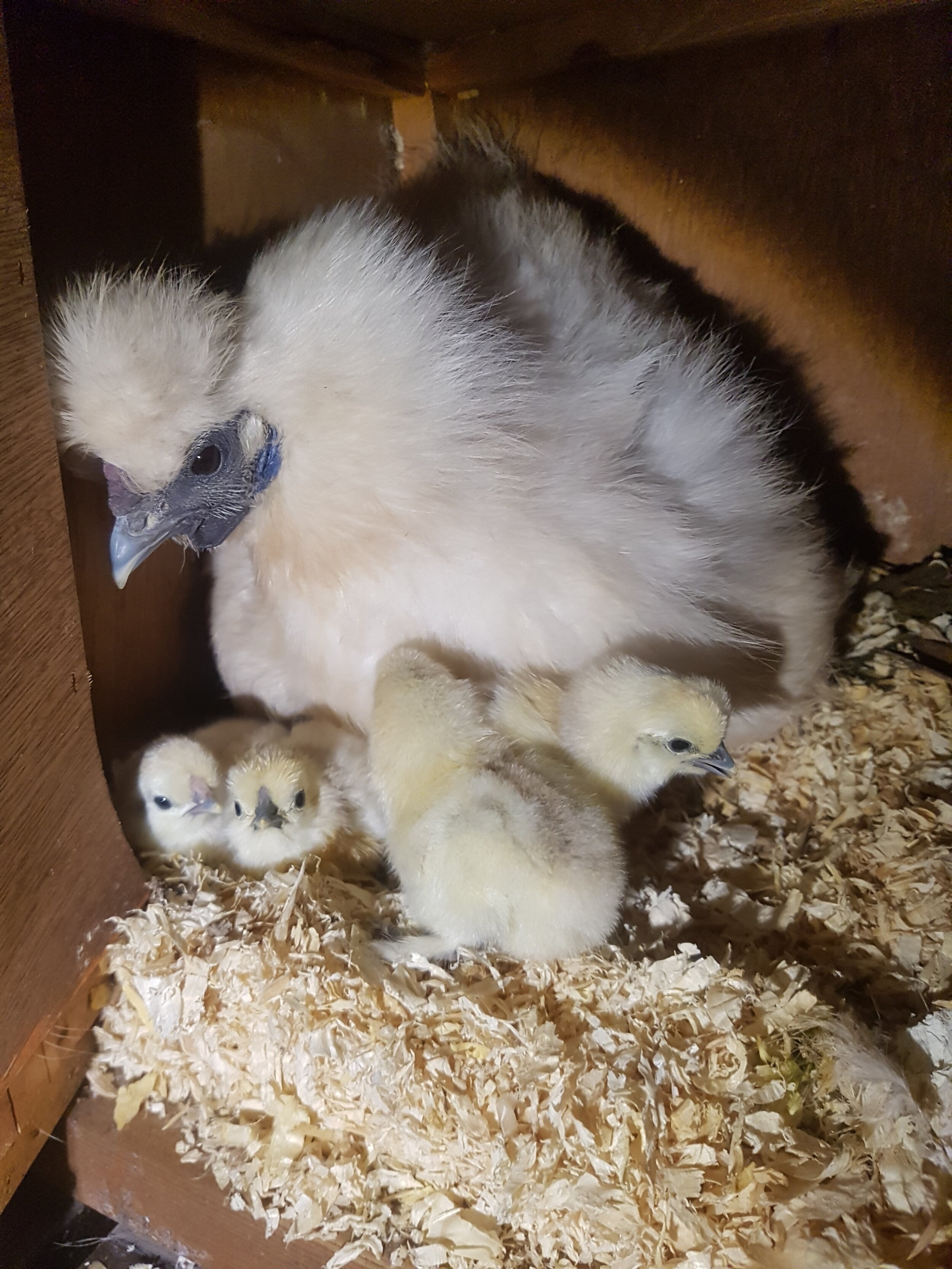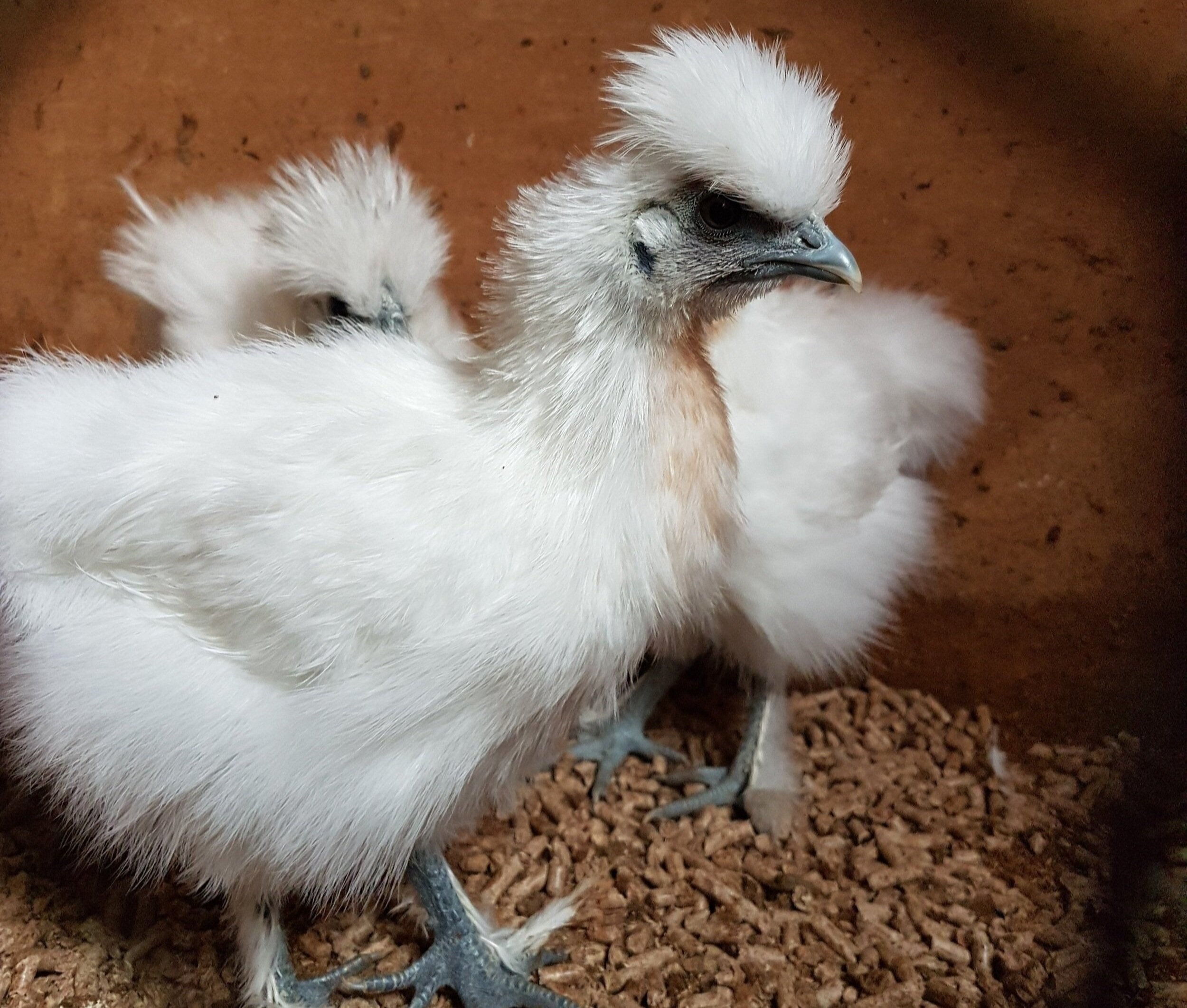HOW TO SEX SILKIE CHICKENS
Unless you have sex-linked chicks, baby chickens can be pretty difficult to tell apart. It’s not until later on in life when they start to grow adult plumage or show characteristic gender behaviours that you can work out whether they’re girls or boys. If you want to know when roosters start crowing, I wrote this article. Some of the most difficult to work out are silkie chickens, but there are a few tell-tale signs. I’ve covered some of these tips below that I’ve learned from keeping silkies for over twenty years. They’re fantastic birds, but if you don’t want to have too many cockerels, it’s worthwhile using these ways to help work out whether you have boys or girls. And if you’re about to hatch out a load of these beautiful chickens, check out my recommendations of hatching gear.
AGE
Unfortunately silkies are not easy to tell the gender at a young age. In general, most chicks will not start growing adult plumage characteristics until they’re between 9 - 12 weeks (3 - 4 months) old. Once silkies have reached this age, use some of the tell-tale signs below to tell your roos from your hens.
CROWING
The easiest and most obvious way to tell if you have a silkie cockerel is if it crows. However, if you’re like me, you want to know what gender your silkie chicks are way before they start that troublesome crowing. Though the age of first crowing will always vary depending on each individual bird, in my experience silkies are quite slow to mature and tend to save their morning cockle-doodle-do until they’re six months and older. And once they start - boy, they don’t stop. Silkies, in my opinion, have one of the loudest crows going!
FEATHERS
One of the best ways to work out the gender of your silkie is by the feathers. At nine weeks (3 months old), some of the gender specific feathers will begin to appear.
Streamers - silkie cockerels tend to get thin, long feathers coming from their crown. Whereas hens have nice, short, rounded feathers, you’ll find that young males have a messy looking crown a top their head with the so called ‘streamers’ sticking out the back.
Saddle feathers - as their name suggests, saddle feathers appear on the back and tail end of poultry; think of the placement of a horse saddle. Saddle feathers are long and thin, grow from the centre of the back and hand down, often curling around the tail and rump.
CROWN-SHAPE
The crown on a silkie, is the group of feathers on top of the head. In hens, when you look down from a birds-eye view, it should be neat and fairly rounded. There should be no ‘streamers’ sticking out as mentioned above. Meanwhile, for males, the crown is often more oblong or egg-shaped. It’s often quite messy, with multiple streamers sticking out in all places.
When you’re looking at the crown, I advise making sure your silkies are dry. A wet crown is almost impossible to correctly identify as it can be a right mess.
ABOVE: A young cockerel with an oval crown and streamers. Below, a young hen with a neat, rounded crown.
WATTLES AND COMB
Though both silkie hens and cockerels both have wattles and combs, boys tend to start growing them earlier. Hen wattles will often remain just small patches of blue on the side of the face until they reach maturity. Meanwhile, young cockerels wattles will start to grow into pale blue or red lobes that hang down a little. Their comb may also begin to grow. Combine such characteristics with some of the ID tips above, particularly the feathers, and you’ll soon have your answer.
BEHAVIOUR
Finally, like all chickens, young silkies will begin to establish gender related behaviour fairly early on. This isn’t necessarily treading, as cockerels often will not attempt this until they’re a lot older. However, you may see two birds standing off against each other. They’ll stand face to face, pushing their neck out and often splaying their neck feathers. These are often males, though hens will also bicker to establish pecking order. However, once again, combined with other characteristics, it will help ID your hens and silkie cockerels.
I have a YouTube outlining some of these IDs - please see below. And if you’ve any questions, please just comment below and I’ll do my best to respond. Happy sexing your silkie chickens!
☕ Enjoyed and found this article useful? Please consider buying me a virtual Coffee. This helps support the content I'm creating, the animals on the farm and the rewilding projects I'm building to help create an oasis for wildlife.












